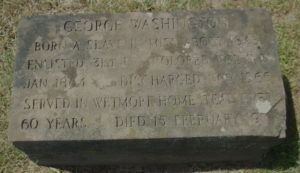By Emily Clark
As cars whiz down a busy Route 66 in Middletown and chain restaurants dot the landscape, high on a hill at the end of Washington Street Extension sits a structure built long before these 21st-century mainstays: the Seth Wetmore House. Dating to 1740s, this stately white Colonial is one of Middletown’s oldest homes and one of thirty-three in the city listed on the National Register of Historic Places, an honor conferred upon it fifty years ago, not only due to the age of the home but also to the people who traveled through it.
A Home For a “River God”
Called a “national treasure” by some local historians, the house was built by Seth Wetmore, a merchant, judge, and deputy to the General Court of Connecticut who served from 1738-1771. A stunning example of Georgian Colonial architecture, it reflects the power and lavishness of those considered “River Gods,” wealthy landowners of the mid-18th century who resided in Connecticut River Valley communities such as Middletown. Once complete, “Staddle Hill” (later known as “Oak Hill”) became the longtime residence of Wetmore, his third wife Hannah Edwards of East Windsor, and his five children.
Because of its size and adornments, the twenty-three-room mansion was meant to serve as a model home for those later built in the area. Clapboard siding and high-end woodwork along with a gambrel roof and a unique broken-scroll doorway gave the outside of this center hall Colonial its distinctive look, including an entire spacious third floor. Inside, the ornate parlor, sunburst decorations, and marble pillars framing the fireplace showcased the opulence of the home which remained in the Wetmore family for more than two centuries. (In 1986, Samuel and Helen Green, the owners at the time, sold the exquisite wood paneling in the home’s south parlor to Hartford’s Wadsworth Atheneum Museum of Art. A duplicate was made and added to the Wetmore house.)
During the early days of the home, Wetmore welcomed notable writers, scholars, politicians, and generals, including his wife Hannah’s brother Jonathan Edwards, Timothy Dwight, the Marquis de Lafayette, and Aaron Burr (a relative and fellow law student). Lively conversations among them, likely occurring in the grand parlor, involved law, politics, and theology. These personal connections secured the judge – and his home – prominently in the eye of high society.
The Wetmore House’s Civil War History
Though renowned for its Georgian architecture and New England features, the house also has connections to a Civil War veteran and former slave from Mississippi. According to Jack Bolles, the owner of the Wetmore house who purchased it in 2007, George Washington, a twenty-two-year-old Black man hoping to gain his freedom in the north after the passage of the Emancipation Proclamation, journeyed to Connecticut in 1865. A recommendation about work available in Middletown led Washington to the Wetmore homestead. Not only did he find work there but also friendship with the judge’s descendants and assumed responsibility for running their 1,200-acre farm for over six decades. When Washington died in Darien in 1929, the Wetmores had him buried at the family’s own plot in Middletown’s Indian Hill Cemetery.
His connection to the well-known family and their home didn’t end with his death, however. When Washington’s great-great-granddaughter from Mississippi inquired at the Middlesex County Historical Society in 2018 about her relative, the Wetmore house, and his life in Connecticut, she gained contact with Bolles, a preservationist and antique collector who invited her and her sister to visit. “They walked in, and . . . were mesmerized to think that George actually lived here,” Bolles said about the 250-year-old home.
Though Judge Wetmore died in 1788, the home remained occupied by his family. Despite their well-documented history of owning enslaved people, the Wetmores became involved in the abolitionist movement of the 19th century, using their house as a stop on the Underground Railroad. Records show that areas secreted by various paneled walls were used to hide those who may have been escaping to freedom.
Today, the storied history of the Seth Wetmore house still holds tales of grand designs, wealthy property owners, and enslaved peoples. It has undergone substantial renovations by Bolles who felt a sense of duty to retain the structure and the stories which make it a valued part of Connecticut history.
Emily Clark is a freelance writer and an English and Journalism teacher at Amity Regional High School in Woodbridge.










